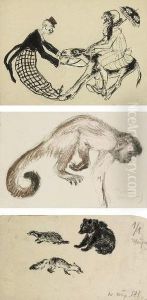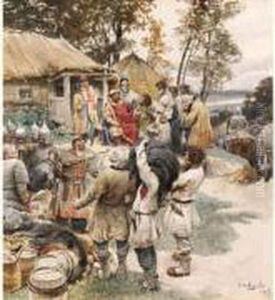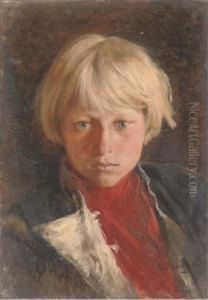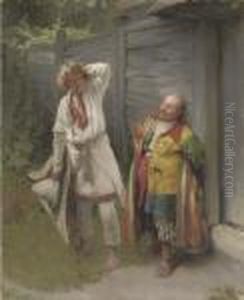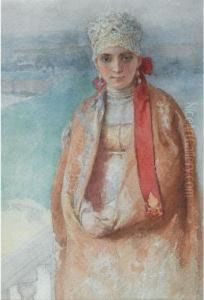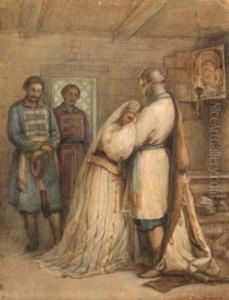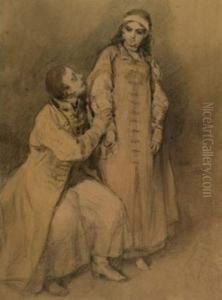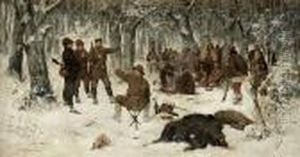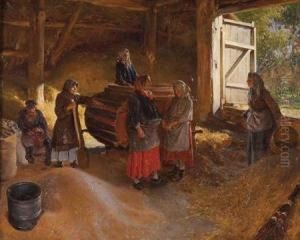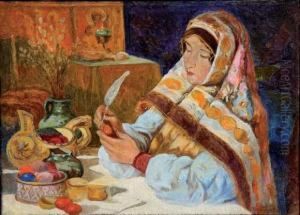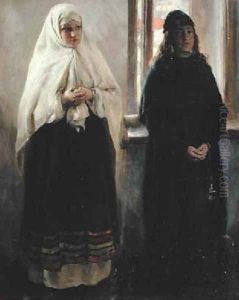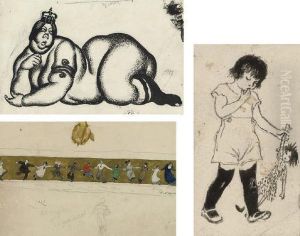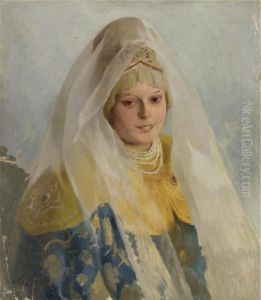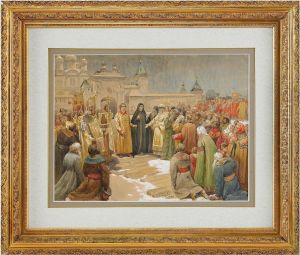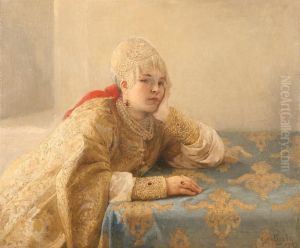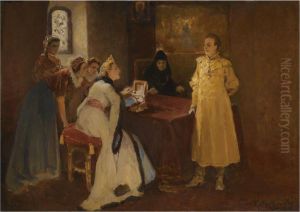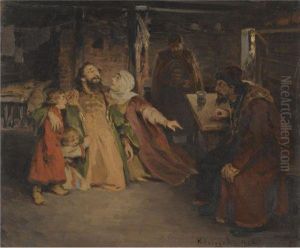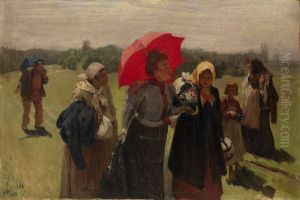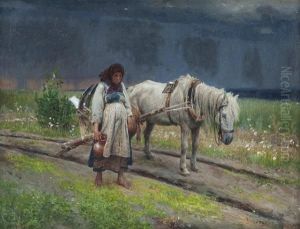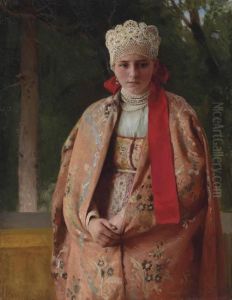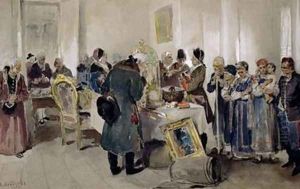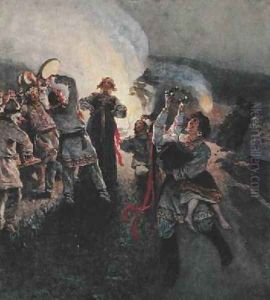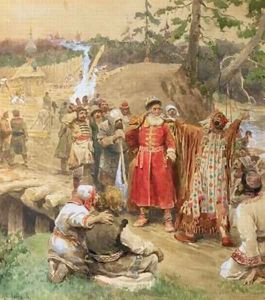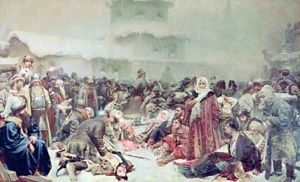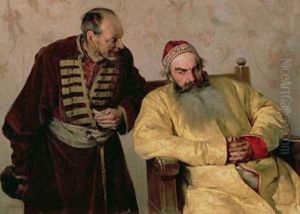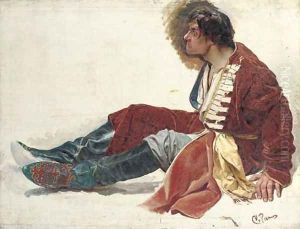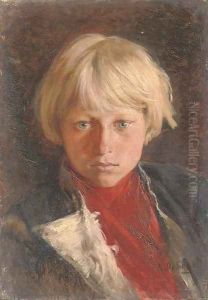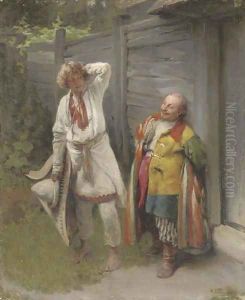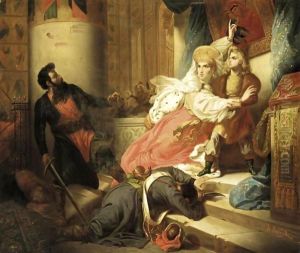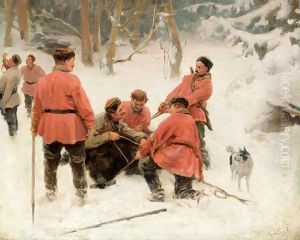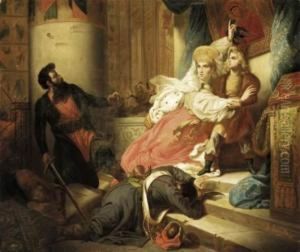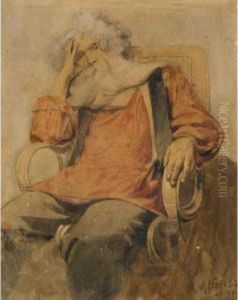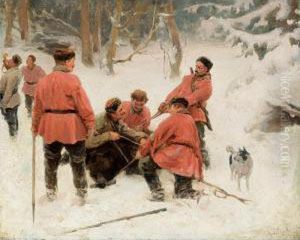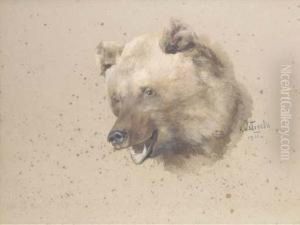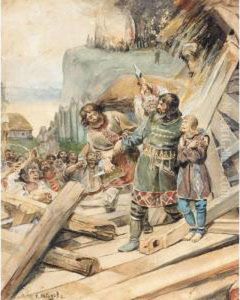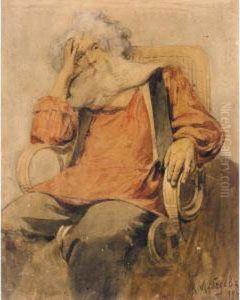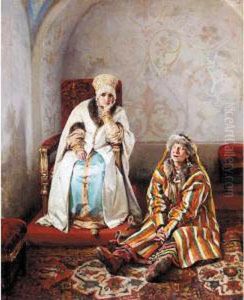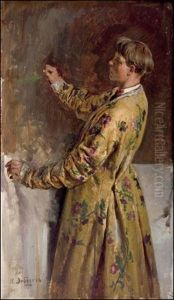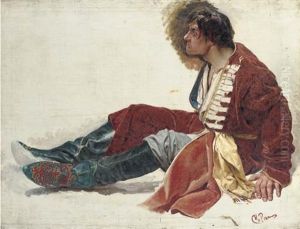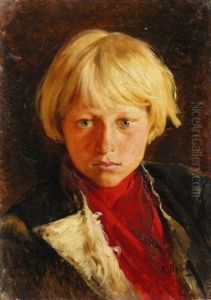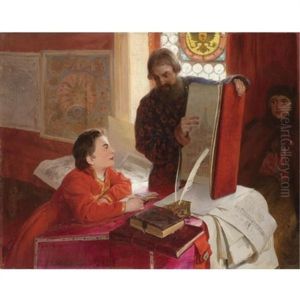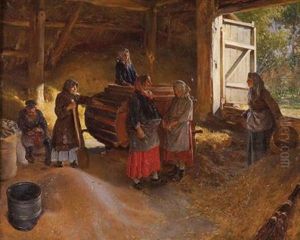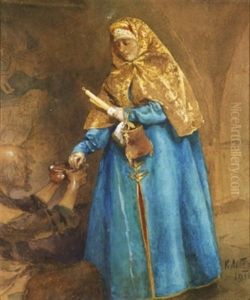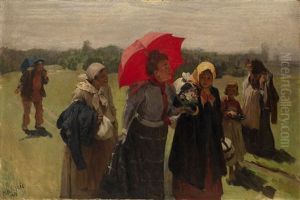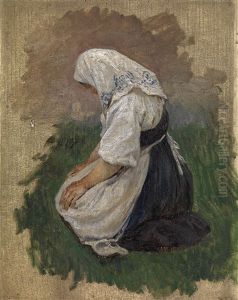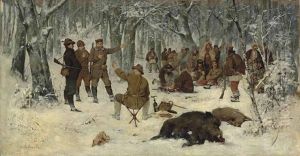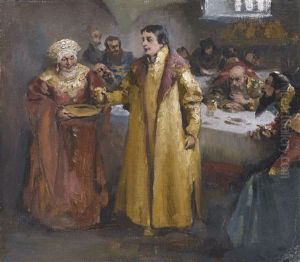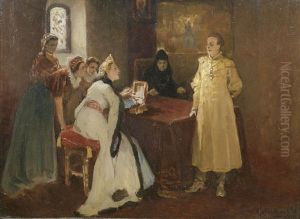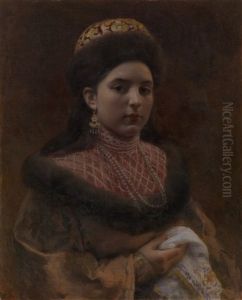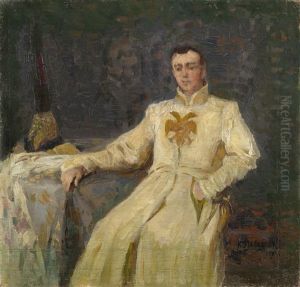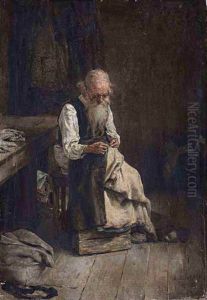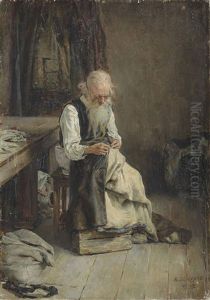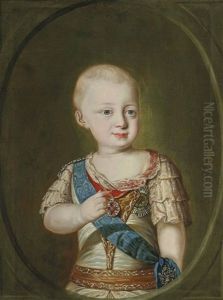Klavdiy Vasilievich Lebedev Paintings
Klavdiy Vasilievich Lebedev was a distinguished Russian painter and graphic artist, born on November 16, 1852, in St. Petersburg, Russia. He was associated with the Peredvizhniki (Wanderers), a group of Russian realist artists who formed an artists' cooperative in protest against academic restrictions. His education in art began at the Imperial Academy of Arts in St. Petersburg, where he honed his skills and developed a keen interest in depicting historical and everyday life themes.
Lebedev's works are characterized by their vivid portrayal of Russian history and folklore. He was particularly interested in the life and culture of the Russian peasantry, which he depicted with a combination of realism and romantic idealization. His paintings often featured historical figures and scenes from Russian history, rendered with great attention to detail and a strong sense of narrative.
Throughout his career, Lebedev received numerous accolades for his artistic achievements. He was awarded medals at several exhibitions and was recognized by the Imperial Academy of Arts for his contributions to Russian art. His works were widely exhibited in Russia and abroad, contributing to the spread of Russian cultural heritage.
Klavdiy Lebedev's legacy is preserved in the form of his paintings, which can be found in major Russian museums, including the State Russian Museum in St. Petersburg and the Tretyakov Gallery in Moscow. His dedication to capturing the essence of Russian society has made him an important figure in the history of Russian art.
Lebedev continued to paint and inspire younger generations of artists until his death on October 21, 1916, in Petrograd, Russia (now St. Petersburg). His work remains a testament to the richness of Russian culture and the artistic spirit of the late 19th and early 20th centuries.
